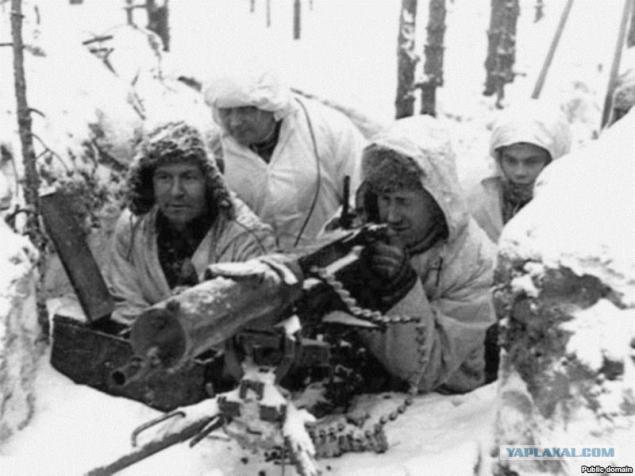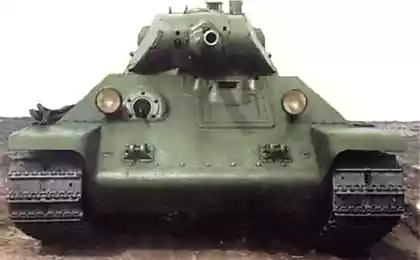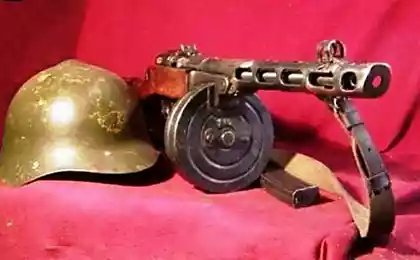1356
The Soviet-Finnish War (1939-1940 biennium).
The official reasons for the outbreak of war - the so-called "shelling of mainila».
20 photos

The Soviet government sent a November 26, 1939 note of protest to the Government of Finland on the shelling, which was made with the Finnish territory.

Responsibility for the beginning of military operations has been charged completely in Finland.

Home Russo-Finnish War took place at 8 am, November 30, 1939.

On the part of the Soviet Union, the aim was to ensure the security of Leningrad. The town is just 30 km away. from the border. Earlier, the Soviet government appealed to the Finnish request to push back its limits in the Leningrad area, offering a territorial compensation in Karelia. However, Finland has refused categorically.

Soviet-Finnish war of 1939 - 1940's caused a real hysteria among the international community. December 14 the USSR was expelled from the League of Nations to the serious violations of procedure (a minority of the votes).

Finnish army troops at the beginning of military operations totaled 130 aircraft, 30 tanks and 250 thousand soldiers. However, the Western powers have pledged their support. In many ways, this is what led to the failure of a promise to change the boundary line. Red Army when the war broke naschityvala3900 aircraft, 6,500 tanks and one million soldiers.

Russian-Finnish War in 1939 divided by historians into 2 stages. Originally it was planned by the Soviet command as a short operation, which was supposed to last about 3 weeks. However, situation is different. The first period of the war lasted from 30 November 1939 to 10 February 1940 (before the rush of the Mannerheim Line). The fortifications of the Mannerheim Line for a long time been able to stop the Russian army. Best equipment Finnish soldiers and more severe than in Russia, winter conditions, also played an important role. The Finnish command was able to make excellent use and terrain. Pine forests, lakes, swamps seriously slowed the movement of Russian troops. Delivery of ammunition was difficult. Serious problems brought Finnish snipers.

The second period of the war dates from February 11 - March 12, 1940. By the end of 1939 the General Staff worked out a new plan of action. Under the leadership of Marshal Timoshenko Mannerheim Line was broken through February 11th. Serious advantage in manpower, aircraft, tanks, allowing Soviet troops to move forward, suffering heavy losses. The Finnish Army is experiencing severe shortage of ammunition, as well as humans. The Government of Finland, and have not received aid from the West, forced to conclude a peace treaty March 12, 1940. Despite the disappointing results of the USSR for a military campaign, set a new frontier.

After the German attack on the Soviet Union, Finland entered the war on the side of the Nazis.

a couple of pictures

More

More

5 more

,,,
Posted in [mergetime] 1388350587 [/ mergetime]
all)

Source:
20 photos

The Soviet government sent a November 26, 1939 note of protest to the Government of Finland on the shelling, which was made with the Finnish territory.

Responsibility for the beginning of military operations has been charged completely in Finland.

Home Russo-Finnish War took place at 8 am, November 30, 1939.

On the part of the Soviet Union, the aim was to ensure the security of Leningrad. The town is just 30 km away. from the border. Earlier, the Soviet government appealed to the Finnish request to push back its limits in the Leningrad area, offering a territorial compensation in Karelia. However, Finland has refused categorically.

Soviet-Finnish war of 1939 - 1940's caused a real hysteria among the international community. December 14 the USSR was expelled from the League of Nations to the serious violations of procedure (a minority of the votes).

Finnish army troops at the beginning of military operations totaled 130 aircraft, 30 tanks and 250 thousand soldiers. However, the Western powers have pledged their support. In many ways, this is what led to the failure of a promise to change the boundary line. Red Army when the war broke naschityvala3900 aircraft, 6,500 tanks and one million soldiers.

Russian-Finnish War in 1939 divided by historians into 2 stages. Originally it was planned by the Soviet command as a short operation, which was supposed to last about 3 weeks. However, situation is different. The first period of the war lasted from 30 November 1939 to 10 February 1940 (before the rush of the Mannerheim Line). The fortifications of the Mannerheim Line for a long time been able to stop the Russian army. Best equipment Finnish soldiers and more severe than in Russia, winter conditions, also played an important role. The Finnish command was able to make excellent use and terrain. Pine forests, lakes, swamps seriously slowed the movement of Russian troops. Delivery of ammunition was difficult. Serious problems brought Finnish snipers.

The second period of the war dates from February 11 - March 12, 1940. By the end of 1939 the General Staff worked out a new plan of action. Under the leadership of Marshal Timoshenko Mannerheim Line was broken through February 11th. Serious advantage in manpower, aircraft, tanks, allowing Soviet troops to move forward, suffering heavy losses. The Finnish Army is experiencing severe shortage of ammunition, as well as humans. The Government of Finland, and have not received aid from the West, forced to conclude a peace treaty March 12, 1940. Despite the disappointing results of the USSR for a military campaign, set a new frontier.

After the German attack on the Soviet Union, Finland entered the war on the side of the Nazis.

a couple of pictures

More

More

5 more

,,,
Posted in [mergetime] 1388350587 [/ mergetime]
all)

Source:























